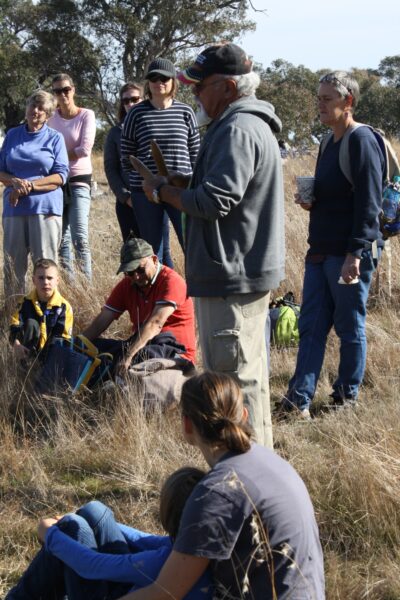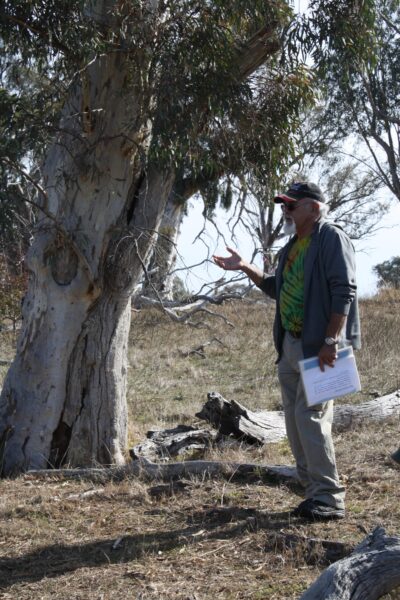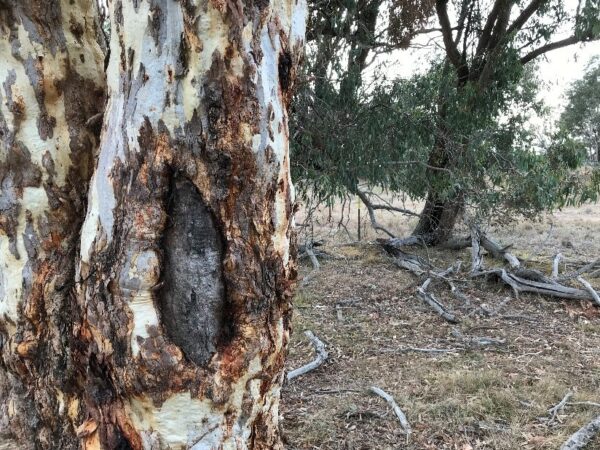Looking after country
Ngunawal Elder Wally Bell recently shared some fascinating insights into the living Ngunawal culture and heritage of Ginninderra and broader Ngunawal Country.
“Dhaura Nuna, Dhaura Ngunawal, Yumalundi,” were the words spoken in traditional language by Wally Bell at the recent ‘Welcome to Country’ for community members at the Ginninderra shrub planting day, during National Reconciliation Week.
“This land is Ngunawal land and welcome – on behalf of the Ngunawal people and myself – welcome to Ngunawal country. Please enjoy your stay on country.”

Above: Ngunawal Elder, Wally Bell leading the Welcome to Country at Ginninderra.
As a Ngunawal Elder, Custodian and Knowledge Holder, Wally oversees Welcome to Country ceremonies, but also has a responsibility to look after, and pass on, Ngunawal knowledge.
“It’s important to understand that we have a living culture. Our next generation is learning about the way that we used to do things and part of my role is to be able to impart that knowledge to the younger generation and wider community.”

Above: Ngunawal Elder, Wally Bell leading the Welcome to Country at Ginninderra.
“As Aboriginal people, we have a strong connection to country and we want to convey that to others so that we can develop an understanding, and then together, we can look after country.”
Sustainability principles were central to the way people lived upon the land, according to Wally, who also leads the Buru Ngunawal Aboriginal Corporation and Mulanggang Traditional Aboriginal Landcare Group.
“How we managed the land was quite different to farming practices, because we lived on the land, we listened to the land as it ‘spoke’ to us, and we cared for the land.”

Above: Wally Bell discussing scar trees at Ginninderra.
“We only used the resources that we needed and then we moved onto the next place. This allowed the last place to regenerate and produce bush tucker and bush medicine or whatever we needed.”
“This place is significant because it highlights our occupation of the region,” Wally said. “While it is one little place it tells a story, and is part of a larger story. It is telling the story about how we used the natural landscape and its features to survive for thousands of years.
A number of remnant scar trees at Ginninderra are one indication of how the landscape was used.
“Scar trees are used for many different purposes. Most of the tree scars here are small in size, indicating the bark has been removed for coolamons to transport various bush tucker. These would have been used to carry acacia seed, yam daisy, chocolate lily and bulbine lily – all of those small tubers and seeds that were important food sources for Aboriginal people.

Above: Scar Tree at Ginninderra.
There are many other scar trees around the place that indicate different uses. Large scars can indicate canoe trees and medium-sized scars shields or other containers.
The efforts to protect trees and restore a shrub layer in the woodlands at Ginninderra is also something that resonates with Wally.
“To Aboriginal people, trees are very important because they are a spiritual connection to the land. The trees are cleansing the air, and our belief is that we use the Eucalypts in cleansing ceremonies as well as in ceremonial dance.”
“These are spiritual aspects of our cultural lore. We come from the land and we are here for a little while, we look after the land and then we are returned to the land.”
